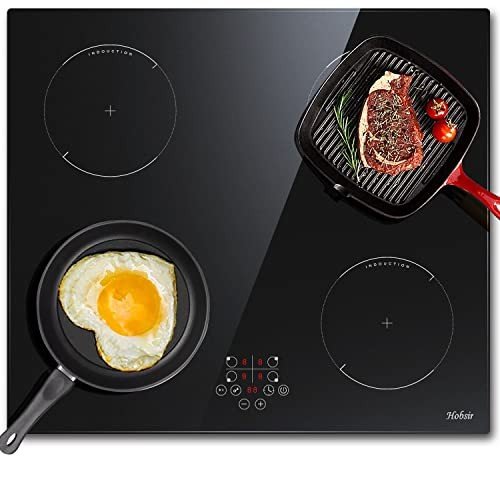Understanding Hobs and Ovens: The Essential Kitchen Appliances
In the realm of kitchen devices, few products are as important as hobs and ovens. These appliances form the backbone of culinary activities, enabling people to produce everything from basic meals to elaborate feasts. Comprehending Ovens Online , types, and performances of hobs and ovens can significantly boost one's cooking experience. This short article dives into the complexities of hobs and ovens, offering insights that deal with both novice and seasoned cooks.
What Is a Hob?
A hob, frequently referred to as a cooktop or stove top, is the flat surface area on which pots and pans are positioned for cooking. Hobs are geared up with heating components that create the required heat for cooking food. They are available in various kinds, consisting of gas, electric, induction, and ceramic options. Each type provides unique benefits and downsides.
Kinds of Hobs
Gas Hobs:
- Heat Source: Natural gas or lp.
- Benefits: Instant heat control and responsiveness, chosen by numerous chefs for precise cooking.
- Drawbacks: Requires a gas connection and can be less energy-efficient.
Electric Hobs:
- Heat Source: Electric coils or smooth glass-ceramic surface areas.
- Benefits: Generally simpler to clean, even heating, and commonly readily available.
- Drawbacks: Slower to warm up and cool down compared to gas.
Induction Hobs:
- Heat Source: Electromagnetic currents.
- Advantages: Quick heating, energy-efficient, and just heats the cookware, not the surrounding surface.
- Disadvantages: Requires compatible pots and pans (ferrous products).
Ceramic Hobs:
- Heat Source: Electric and has a smooth glass surface.
- Benefits: Sleek look, easy to tidy, and even heating.
- Downsides: Can take longer to heat up and cool down.
What Is an Oven?
An oven is an enclosed appliance that cooks food by surrounding it with dry heat. Ovens can be standalone units or combined with hobs in a single device referred to as a range. Ovens are versatile tools that can be used for baking, roasting, broiling, and more.
Kinds of Ovens
Conventional Ovens:
- Heat Source: Electric or gas.
- Advantages: Good for conventional baking and roasting.
- Drawbacks: Can have uneven heat circulation.
Convection Ovens:
- Heat Source: Electric or gas with a fan for distributing air.
- Benefits: More even cooking and faster cooking times due to air flow.
- Disadvantages: Can be more expensive and may need modifications in cooking times.
Microwave Ovens:
- Heat Source: Microwaves.
- Advantages: Quick cooking and reheating; excellent for defrosting.
- Downsides: Can not brown or crisp food well.
Steam Ovens:
- Heat Source: Steam generation.
- Advantages: Retains nutrients and moisture in food, much healthier cooking alternative.
- Drawbacks: Longer cooking times and normally higher expense.
Key Differences Between Hobs and Ovens
While hobs and ovens serve the primary purpose of cooking food, their functionalities and uses differ significantly. The following table summarizes these essential differences:
| Feature | Hob | Oven |
|---|---|---|
| Cooking Method | Direct heat | Confined heat |
| Primary Use | Boiling, sautéing, frying | Baking, roasting |
| Heat Source | Gas, electric, induction | Gas, electric, steam |
| Cooking Area | Flat surface | Enclosed space |
| Cooking Time | Typically much faster | Differs based on dish |
| Control & & Precision | Immediate and direct | Depend on settings and timers |
Benefits of Using Hobs and Ovens Together
Integrating making use of a hob and an oven can significantly enhance the cooking process. Here are some advantages:
- Versatility: Different kinds of food can be cooked all at once.
- Efficiency: Using both permits for various cooking strategies, such as scorching on the hob and baking in the oven.
- Time-Saving: Multi-tasking can substantially decrease general cooking time.
Upkeep and Care
To make sure the longevity of hobs and ovens, routine upkeep is important. Here are some suggestions:
For Hobs:
- Clean spills right away to avoid staining.
- Use suitable cleaners for particular materials (e.g., ceramic cleaner for glass-ceramic hobs).
- Regularly examine gas connections for leakages (for gas hobs).
For Ovens:
- Wipe down the interior after each use to prevent accumulation.
- Usage self-cleaning features if readily available, or apply oven cleaners for hard stains.
- Regularly check seals and gaskets for wear and tear (to preserve heat performance).
Frequently asked questions About Hobs and Ovens
1. What is the best kind of hob for a novice cook?
Response: A ceramic or electric hob is often advised for newbies due to relieve of usage and cleansing.
2. Can I utilize any cookware on an induction hob?
Answer: No, induction hobs need cookware made from magnetic products (e.g., cast iron or stainless steel).
3. How often should I clean my oven?
Answer: It is suggested to clean your oven every few months, or more often if you use it frequently.
4. Is it better to bake in a stove?
Response: Yes, stoves are frequently much better for baking as they supply even heat circulation. Nevertheless, some delicate dishes may take advantage of standard ovens.
Understanding the functionality and distinctions in between hobs and ovens is vital for any cooking lover. Whether one chooses the immediate heat of a gas hob or the accuracy of an induction cooktop, each type provides special benefits. Likewise, ovens differ widely in function, from conventional baking to steam cooking. By appreciating these home appliances' roles in cooking, cooks can improve their cooking skills and streamline their kitchen activities.

